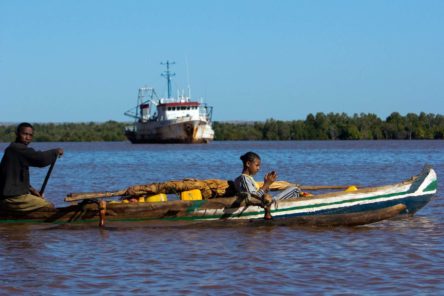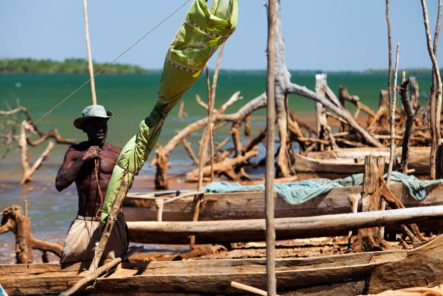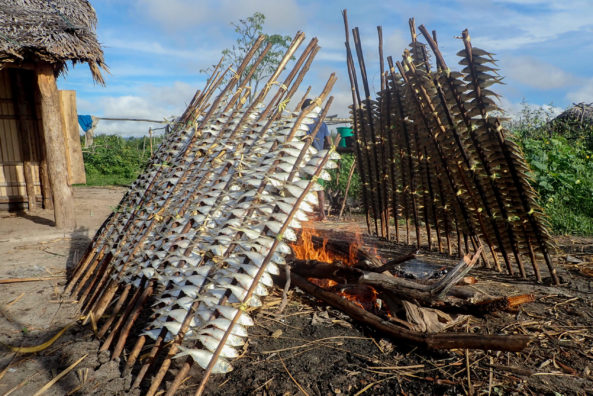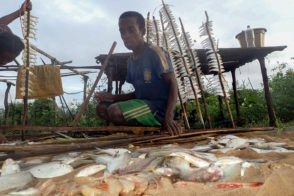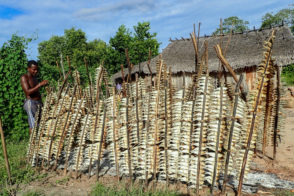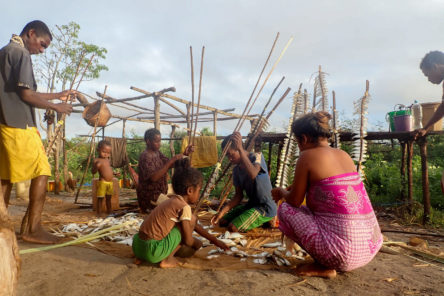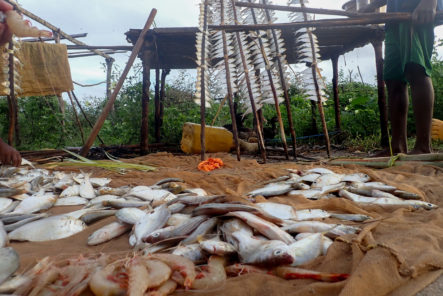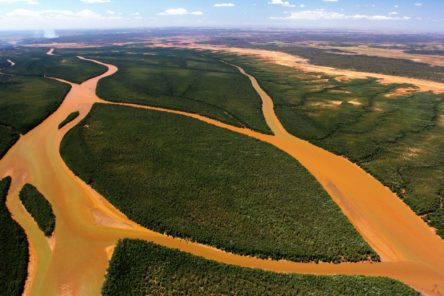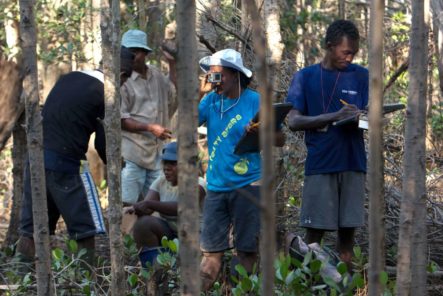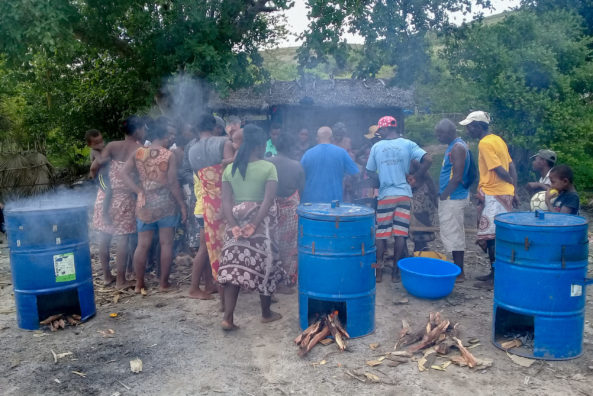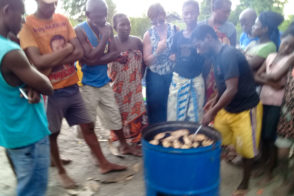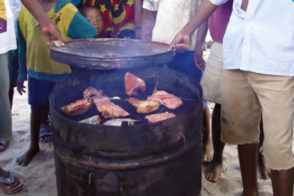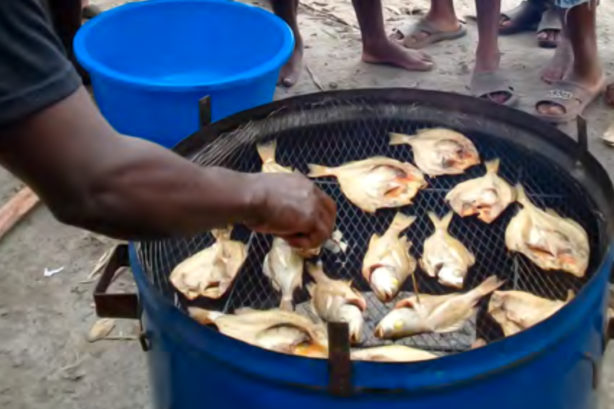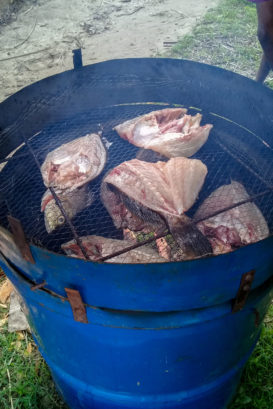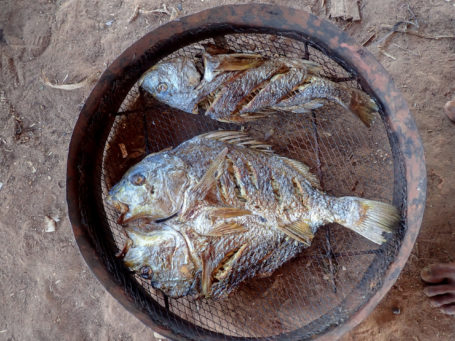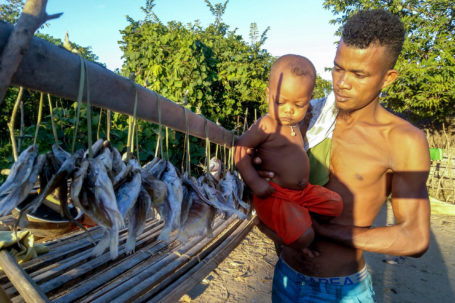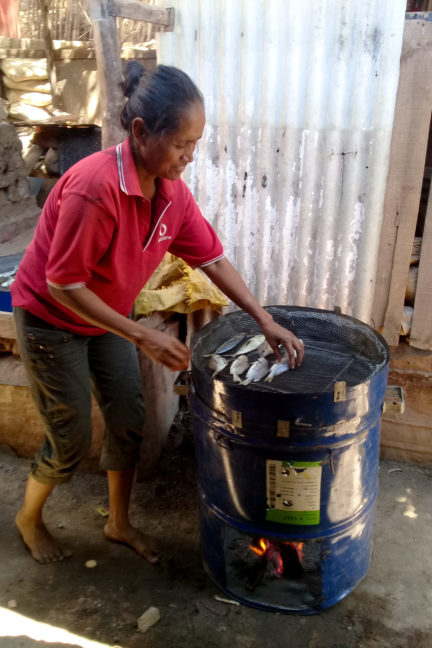This post is also available in:
 French
French  Malagasy
Malagasy
In Madagascar, around 500,000 people depend on fishing for their survival, with their catch being their main source of protein and often their sole source of income too.
As a result of climate change and overfishing, marine resources across the world are diminishing. But in 14 fishing villages in the Bay of Mahajamba in northwest Madagascar, local communities have embarked on a process of sustainably managing their natural marine resources and the small-scale fisheries upon which they depend. My role, as Technical Coordinator for Fisheries, is to support these communities on their journey.
In an isolated area like Mahajamba Bay, opportunities to sell fish are uncertainIn an isolated area like Mahajamba Bay, opportunities to sell fish are uncertain, as it is difficult for collectors to travel to the bay to buy freshly caught fish to then sell on in towns and cities. During the rainy season (between November and March) it is almost impossible – roads are cut off and travelling by boat is limited due to storms and cyclones. However, the rainy season is when catches are the most abundant.
In this remote context, it is absolutely vital that fishing communities are able to rely on seafood processing and preservation techniques. Without this, the bay’s fishermen and fisherwomen watch helplessly as their precious catches are spoiled before they can be sold. This means great fishing effort for nothing, unnecessary pressure on natural resources and not enough food or income for fisher families.
To preserve their fish, communities here have been using the traditional technique of ‘braising’ for generations. Unfortunately, this technique is not a sustainable solution; it involves a large consumption of wood, requires a great deal of time, involves spraying pesticides which can have serious consequences on human health and the environment, and finally, the proportion of poorly preserved fish unfit for sale (referred to here as post-catch losses) remain significant.
In May 2018, a study on the journey of the fish in the bay, from the fishing boats to the markets (conducted with communities by Blue Ventures and an external consultant) estimated these post-catch losses at 14%. This represents significant waste, at a time when the state of global seafood stocks is in peril and the demand for fish is increasing.
Post-catch losses are a constant concern for the communities in Mahajamba Bay. Some fishers, like Mr Rabenoely, who for a long time used the traditional technique of braising and spraying pesticides, are beginning to worry about the consequences of such practices on the health of both people and nature. Communities are in vital need of improved sustainable fish processing and conservation techniques, such as smoking, drying and salting.
In September 2019, I travelled to Ghana to participate in an international workshop organised by the Food and Agriculture Organization of the United Nations (FAO) on the FAO-Thiaroye fish processing technique (FTT) – a specific technique of fish smoking.
Fish smoking involves burning wood and exposing fish to the smoke to cook and preserve it. Also referred to as ’hot smoking’, this technique has been used since prehistoric times and can eliminate parasites.Fish smoking involves burning wood and exposing fish to the smoke to cook and preserve it. Also referred to as ’hot smoking’, this technique has been used since prehistoric times and can eliminate parasites. The FTT hot smoking technique that I learnt about during the workshop is a so-called ‘improved’ technique, but the basic principle is the same.
As well as eliminating the need for harmful pesticides and greatly reducing post-catch losses, the improved hot smoking technique consumes half as much deadwood fuel as traditional braising (deadwood is wood that has been collected from the forest floor, as opposed to wood that has been cut directly from trees). Of course, in all cases, communities who are adopting hot smoking must aim to identify sustainable wood sources that comply with local regulations. For example, in Madagascar it is illegal to cut mangrove wood. The communities that we partner with use deadwood for smoking, and we also support community-based mangrove management to avoid illegal cutting (through strengthening community patrols and planting alternative wood sources).
To build upon the learning from the FAO workshop and the study we carried out in Mahajamba Bay, we met with communities in the area and worked with specific groups within the communities, like women, who play a key role in fisheries conservation, processing and selling. We collaboratively evaluated the data we had collected so far on post-catch losses during the rainy season, and discussed the main advantages of hot smoking; reduction of post-catch losses, less wood needed than braising (thus reducing collection costs and time), and finally, maintained quality.
The most important part of these meetings was to understand how hot smoking could be adapted to the needs of fishers and be sustainable. We encouraged the fishers and collectors in Mahajamba Bay to test the technique out for themselves, so that they could experience the benefits first hand and advise on locally-relevant adaptations.
Following the consultations, hot smoking was introduced in Mahajamba Bay in December 2019, with 26 fishermen trained in the technique. As always, commitment, motivation and availability to take part varied from one village to another, and I made sure to observe everyone’s reactions carefully.
All of the fishers quickly found that with this technique, their catch could be stored for at least three weeksAll of the fishers quickly found that with this technique, their catch could be stored for at least three weeks, and could even be re-smoked for another week, without altering the quality.
In the village of Ambodimadiro, Mr. Ifalia and his family were used to producing and eating braised fish – like most fishing households here. During a demonstration of smoking with other fishers in the village, he and his wife and even their young children first noticed that the taste of smoked fish, which could be eaten immediately after smoking, was very different from braised fish. The next day, Mr. Ifalia brought back a batch of fish to confirm this difference in taste – he said that the smoked fish was much more appetising. Mr. Ifalia and his wife also liked that the smoking process did not require close supervision, allowing them to take care of other tasks at the same time.
A fisherman I know well, Edesy, who is always curious to try out new solutions, has attended several meetings in different villages about fish preservation. In every meeting he attended, he recalled the collective frustration of his fellow fishers at seeing their catch lost and irrecoverable during the rainy season. He is determined to convince others to get involved and always tells the story of his project to buy a barrel and make a smokehouse by himself,
I will do everything to make my family happy”, Edesy tells me.
About six months after the initiation and distribution of nine smoking barrels to the fishing families, several of them started taking the smoking barrels to their fishing camps (places where fishers settle for a few days to fish) to avoid making the trip to the village each time. This was a clear sign that the technique was working well.
“If I had known this technique before, I would have already installed several smoking barrels in my camp sites, and I might have a lot of customers in Majunga and Tanà! The quality of the product is exceptional, both the texture of the flesh and the taste,” enthused Mr. Felix at a community meeting, a member of the fishers’ association in the village of Antafiamorango. He told me that he is already planning to boost his marketing plan and expand his trade circuit.
I will be able to spend less and provide for my children better,” smiled Mr. Rabenoely after a demonstration of fish smoking in his village, Antangena.
Convinced by this technique, which saves Mr. Rabenoely the drudgery of gathering large quantities of dry wood in the rainy season and traveling to buy harmful pesticides to braise the fish, Mr. Rabenoely has since then adapted his fish smoking technique, finding the best ways to satisfy his local, regional and national customers.
In March 2020, an awareness raising campaign was carried out in the municipality of Andranoboka, one of the areas where Blue Ventures operates. On market day, which happens every Thursday, we arranged a smoked fish tasting session to understand what the communities thought of the texture and flavour. The resounding opinion was that it tasted good and many people said that they would consider buying it on a regular basis.
Amongst fishers and collectors, there is an increasing desire to be trained not only in the smoking technique, but also in the manufacture of smoking barrels, in order to gain autonomy from the manufacturers.Amongst fishers and collectors, there is an increasing desire to be trained not only in the smoking technique, but also in the manufacture of smoking barrels, in order to gain autonomy from the manufacturers. Since introducing the technique to the communities, we have developed a technical factsheet to share the progress of our learning for the manufacture of the smoking barrel, the smoking process, and the sale and consumption of smoked fish.
Elsewhere along Madagascar’s coast, as well as in the Comoros, community-based fishers’ associations have expressed an interest in learning the technique. In a few weeks time, I will be leading the first complete training session on making smoking barrels and hot smoking with fishers in the Bay of Mahajamba. Members of Vezo Miray Nosy Barren, the co-management association of the marine protected area of the Barren Isles (about 400 km to the south) have expressed their willingness to make the trip so that they can also take part in a training course. In the meantime, the fishers of Mahajamba Bay will produce and send them a video tutorial.
In the context of the COVID-19 pandemic, which has further restricted fishers’ access to markets to sell their products, the preservation of fish by hot smoking is meeting an even more pressing need. Through improved preservation techniques, tens of thousands of small-scale fishers in Madagascar, and many more around the world, can protect their catch all year round and as a result, strengthen their resilience.
Explore our technical factsheet on hot smoking as a fish preservation technique.


